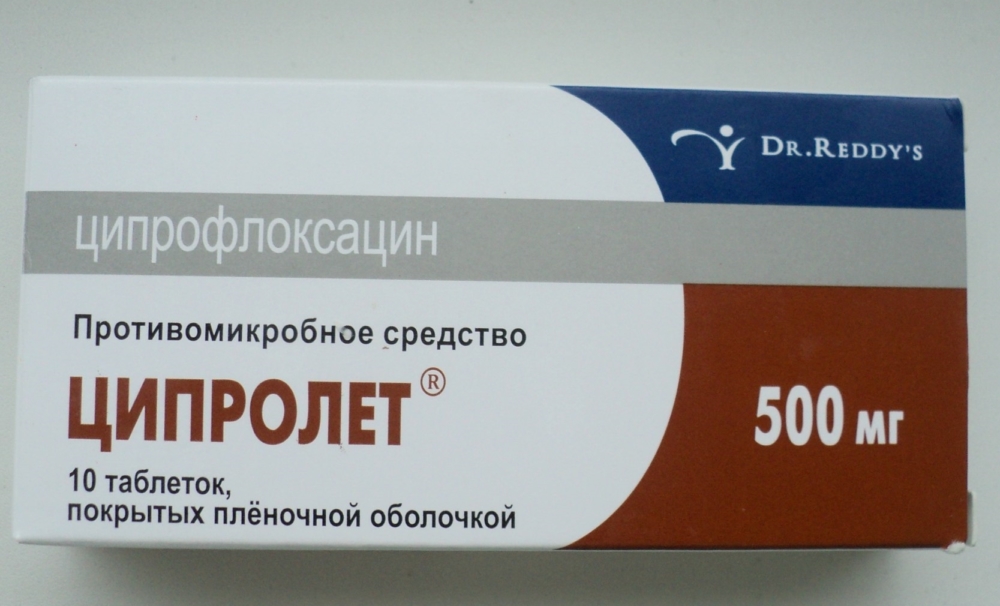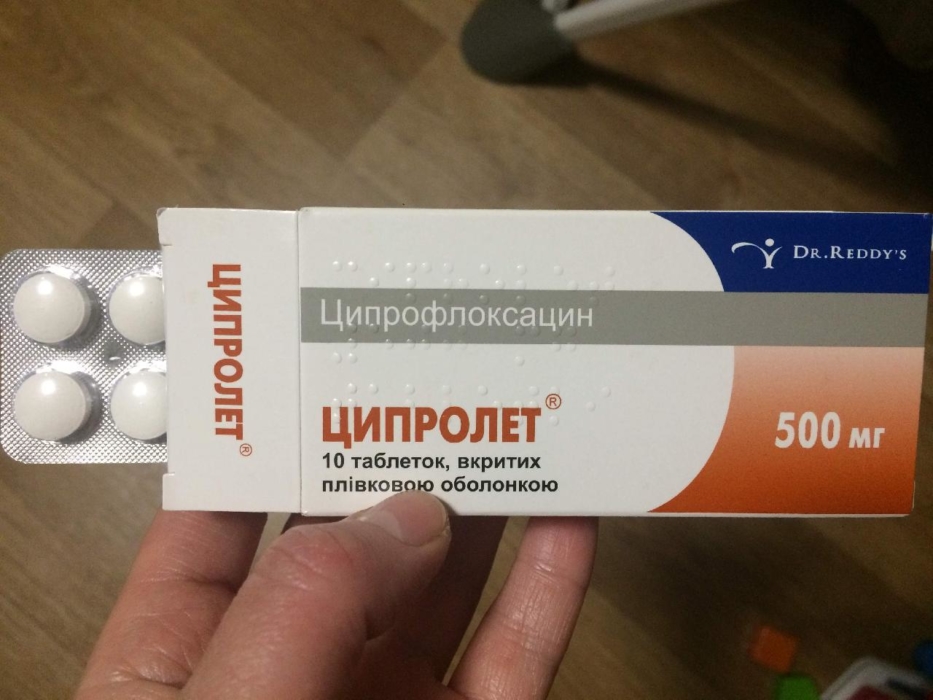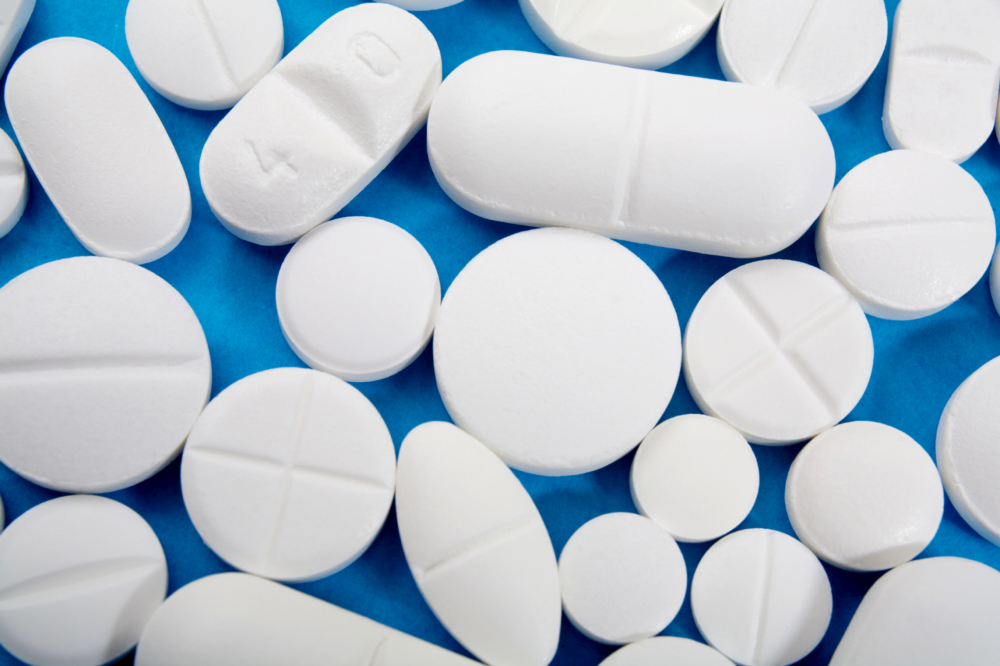Ciprolet tablets are an antimicrobial drug with bactericidal properties. Effectively used to treat infectious diseases, adversely affecting strains of pathogenic pathogens. This is the most active drug among representatives of its group.
Material Content:
The composition of the drug
Ciprolet, ciprofloxacin are the empirical names for the same complex chemical substance, which is an antibiotic of the fluoroquinolone group (second-generation quinolones).
They exhibit the following properties:
- reactivity due to a fluorine radical in the structure of a molecule with strong oxidizing properties;
- bactericidal activity against aerobic pathogenic bacteria that consume oxygen in the process of life and give a negative Gram test;
- activity to staphylococci, enterococci, chlamydia and other pathogens;
- passivity to anaerobes living without oxygen and giving a positive Gram test.
Compared with quinolones, activity is expressed 10-20 times stronger, the effectiveness of the action covers a wide range of diseases.
The duration of the patient’s treatment depends on the culture of the pathogenic strain causing the health disorder and the correct selection of the drug.
Cyprolet is produced in several versions:
- tablets for oral administration with different contents of ciprofloxacin;
- combination drug with tinidazole;
- eye drops used in ophthalmology;
- concentrated solution for infusion infusion.
Ciprolet 500 mg tablets contain the active substance in terms of ciprofloxacin in an amount of 500 mg, Ciprolet 240 mg includes the appropriate concentration.
The composition of Ciprolet tablets includes excipients: finely divided cellulose and its sodium salt, corn starch, magnesium salts (stearate and talc), silicon oxide (IV).
Ciprolet A tablets contain ciprofloxacin and tinidazole with a dose of 500 mg and 600 mg. Tinidazole belongs to imidazole compounds, it enhances the effect on gram-positive pathogenic bacteria, for which ciprofloxacin is inactive.
Eye drops are packed in 5 ml flasks of opaque glass with an active substance with a concentration of 3 mg / ml.
The solution for infusion procedures is produced in 100 ml vials with 2 mg / ml.
What is prescribed Ciprolet tablets
Tsiprolet successfully copes with diseases of varying severity.
Indications for use include infectious and inflammatory diseases:
- stomach, liver, intestines;
- blood
- ear, throat, nose;
- bronchi, lungs;
- female and male genital organs;
- bones, joints;
- muscles and connective tissues (tendons), skin;
- kidney, urinary tract.
Well respond to treatment with the drug:
- ulcers, abscesses, cuts, erythema - focal redness of the epidermis caused by the expansion of blood vessels with the formation of blisters, wet crusts;
- salmonellosis, dysentery, campylobacteriosis;
- osteomyelitis, arthritis;
- meningitis;
- complications caused by infections after surgery.
The drug is used to treat cancer patients.
In ophthalmology they treat:
- conjunctivitis, bacterial corneal ulcers, keratitis - infections of the surface of the eyeball;
- eye damage due to mechanical injuries.
Conduct preoperative preventive procedures.
Instructions for use and dosage for adults and children
Cyprolet is effective when administered orally and administered parenterally. Reception on an empty stomach accelerates its permeability to blood plasma and transfer to infected organs and tissues. It quickly penetrates the kidneys and is retained in them for a long time, actively acting on Pseudomonas aeruginosa, the main causative agent of complex urinary tract infections. The drug is excreted without changing the molecular formula from the body with urine in the amount of 40% of the dose after 24 hours. The maximum concentration in blood plasma accumulates within 2 hours after ingestion and 30 minutes after infusion.
Instructions for use contain general instructions for treatment with the drug, the doctor gives the prescription, taking into account the constituent symptoms of the disease:
- Cyprolet is prescribed for adults by mouth, 250-500 mg 2 times a day, in severe cases 750 mg up to 4 times.
- An infusion solution is prepared with a concentration of 100-200 mg, the procedure is carried out 2 times a day, a duration of at least 30 minutes. The drug can be administered jet, but the infusion infusion is more effective. The concentrate is diluted in an isotonic or 5% glucose solution.
- For patients with renal dysfunction, regular laboratory monitoring of the blood composition is carried out, according to the results of the analyzes, the dosage and frequency of taking the drug are adjusted.
- In case of disturbances in the blood supply to the brain, epilepsy, neurological diseases, convulsive manifestations, treatment is carried out under stationary conditions.
- Elderly people with weakened health and immunity are prescribed therapy in hospitals under the supervision of medical personnel, monitoring blood pressure and heart rate.
- Treatment lasts from 7-10 days to 4 weeks.
- Instillations of eye drops are performed every 4 hours for 1-2 drops in the conjunctival sacs, and not in the pupil, if necessary, hourly. After improving vision, the intervals between instillation are increased.
- For children, the drug is prescribed after 15-18 years, taking into account physical development.
While taking the medicine, you need to drink a large amount of water to dissolve and remove toxins from the body, the breakdown products of the drug. Be sure to perform blood tests for the content of urea, creatinine, hepatic transaminases (their activity).
During pregnancy and lactation
Antibiotics, due to their active bactericidal properties, have a large number of side effects on all human organs, and can cause liver and kidney dysfunctions. They kill pathogenic bacteria and microorganisms, but at the same time they can cause irreparable harm to beneficial representatives of microflora living in the human body. A pregnant woman, bearing a child, spends a lot of vitality on this. Taking antibiotics at any stage of pregnancy can cause negative consequences for the developing fetus and the condition of the expectant mother.
If an antibiotic is needed for a nursing mother, then the baby is transferred to artificial nutrition.
Drug interaction
Ciprofloxacin is an active substance that can easily react with other drugs, thereby changing the direction of exposure, enhancing or weakening the therapeutic effect.
Antacids containing aluminum or magnesium compounds reduce the penetration of the drug from the stomach into the blood. Medications are taken at intervals of 4 hours.
Cyprolet delays the decomposition and excretion of theophylline from the body and creates the conditions for its accumulation in blood plasma.
When carrying out intravenous procedures with barbiturates, changes in blood pressure, heart rate and ECG readings are possible.
For the preparation of an infusion solution, substances that give alkaline reactions are not used.
Alcohol compatibility
Reception of Tsiprolet can cause inhibition of a person's reactivity. Care must be taken when driving, performing particularly dangerous and technically difficult work. Alcohol enhances the negative effects of the drug on the human body.
Contraindications, side effects and overdose
Contraindications for use:
- sensitivity to quinolones of the first and second generation, benzalkonium chloride, which is part of the eye drops;
- pregnancy, breastfeeding;
- adolescence with fragile bone tissue.
In studies on rodents, it was found that quinolones can cause changes in cartilage and bone tissue. Clinical trials in humans have not been conducted. To exclude arthropathy in children, the drug is prescribed after the final formation of the skeleton.
Medicines are able to inhibit the functional activity of a person weakened by a disease, causing all kinds of ailments. Side effects from the application are quite diverse:
- depressed state, fatigue, sleep disturbance;
- dysuria - difficult, spontaneous, frequent or rare, copious urine output;
- glomerulonephritis - inflammation of the glomeruli of the kidneys, accompanied by edema, increased blood pressure, decreased excretion of urine;
- crystalluria - the content of crystals in the urine caused by a violation of salt metabolism;
- albuminuria - excretion of protein with urine;
- urethral bleeding - discharge of blood from the urethra;
- skin redness and irritation, urticaria;
- nausea, vomiting, frequent stools, painful condition, and abdominal cramps;
- candidiasis - the development of yeast-like fungi of the genus Candida on the mucosa and in human organs in connection with a change in normal microflora;
- dizziness, loss of coordination, migraine;
- visual impairment;
- violations of the liver and kidneys;
- heart palpitations, interruptions in heart rate, lowering blood pressure;
- crystalluria - inflammation of blood vessels: veins, arteries, capillaries;
- pseudomembranous colitis - an inflammation of the intestine caused by the rapid development of clostridia against the background of a violation of the microflora composition;
- arthralgia - periodic pain in the joints;
- gastrointestinal tract disorders;
- violation of energy metabolism in muscle and other tissues;
- deterioration in blood composition: a decrease in the content of leukocytes, platelets, an increase in eosinophils.
Infusion of the drug may be accompanied by soreness and redness of the veins.
Instillation of eye drops causes a burning sensation, redness of the conjunctiva.
Overdose can occur due to prolonged use of the drug in excess of the permissible concentration and cause negative manifestations:
- violation of the digestive system, accompanied by vomiting, diarrhea;
- a disorder of the psychoemotional state, manifested by headache, hand tremor, convulsive reactions, hallucinations;
- allergic reactions expressed by urticaria, dermatitis.
To eliminate the painful manifestations, stop taking the medicine. If necessary, the stomach is washed, activated charcoal is taken, a large amount of liquid is used to accelerate the decomposition and removal of Ciprolet from the body with urine.
Antibiotic Analogs
Preparations based on ciprofloxacin are produced by manufacturers in different countries.
Analogs of Tsiprolet from the group of fluoroquinolones: Pefloxacin, Ofloxacin, Levofloxacin.
Derivatives of quinolones: Nevigramon, Nalurin, Gramurin, Uribid, Nidanthin Urigram, Dioksatsin, Palin, Uripan, Uromidin, Urisan. These drugs are used effectively in the treatment of urinary tract infections.
Due to the high efficiency of Ciprolet and a large list of side effects, it is not recommended for use in mild "banal" infections. It is possible to replace it with simpler analogues without the risk of complications from the drug.

















